- Egypt Tour Magic
- Egypt Tour Packages
- Excursions in Egypt
- Cairo Tours and Excursions
- Hurghada Tours and Excursions
- Soma Bay Tours and Excursions
- Makadi Bay Tours and Excursions
- Sahl Hasheesh Tours and Excursions
- El Gouna Tours and Excursions
- Marsa Alam Tours and Excursions
- Port Ghalib Tours and Excursions
- El Quseir Tours and Excursions
- Dendera and Abydos Day Tours
- Aswan Tours and Excursions
- Luxor Tours and Excursions
- Alexandria Tours and Excursions
- Sharm El Sheikh Tours and Excursions
- Top Rated Tours in 2025
- Optional Excursions in Egypt
- Private Transfer
- Blogs About egypt
- Ancient Egypt
- What You Need To know Before Your First Trip To Egypt
- Best Places to Visit in Egypt 2025
- Top Attractions in Red Sea Resorts 2025
- Top 10 Tourist Activities in Egypt
- Top 30 Activities You Can’t Miss in Egypt
- The Guide to Guided Tours in Egypt
- Egypt’s Ancient and Modern History
- The Nile River
- The Deserts of Egypt
- Historical Sites in Egypt
- Cairo
- Alexandria
- Luxor
- Aswan
- The Red Sea
- Dendera Temple
- El Fayoum Oasis
- Bahariya Oasis
- Siwa Oasis
- Al Alamein
- Marsa Matruh
- Ancient Egyptian gods
- famous Egyptian dishes
- UNESCO World Heritage sites
- About Us
- Why Egypt Tour Magic
- Egypt Tour Magic
- Egypt Tour Packages
- Excursions in Egypt
- Cairo Tours and Excursions
- Hurghada Tours and Excursions
- Soma Bay Tours and Excursions
- Makadi Bay Tours and Excursions
- Sahl Hasheesh Tours and Excursions
- El Gouna Tours and Excursions
- Marsa Alam Tours and Excursions
- Port Ghalib Tours and Excursions
- El Quseir Tours and Excursions
- Dendera and Abydos Day Tours
- Aswan Tours and Excursions
- Luxor Tours and Excursions
- Alexandria Tours and Excursions
- Sharm El Sheikh Tours and Excursions
- Top Rated Tours in 2025
- Optional Excursions in Egypt
- Private Transfer
- Blogs About egypt
- Ancient Egypt
- What You Need To know Before Your First Trip To Egypt
- Best Places to Visit in Egypt 2025
- Top Attractions in Red Sea Resorts 2025
- Top 10 Tourist Activities in Egypt
- Top 30 Activities You Can’t Miss in Egypt
- The Guide to Guided Tours in Egypt
- Egypt’s Ancient and Modern History
- The Nile River
- The Deserts of Egypt
- Historical Sites in Egypt
- Cairo
- Alexandria
- Luxor
- Aswan
- The Red Sea
- Dendera Temple
- El Fayoum Oasis
- Bahariya Oasis
- Siwa Oasis
- Al Alamein
- Marsa Matruh
- Ancient Egyptian gods
- famous Egyptian dishes
- UNESCO World Heritage sites
- About Us
- Why Egypt Tour Magic
Transportation in Egypt: A Complete Guide to Getting Around the Land of Pharaohs
Egypt, with its rich history and stunning landmarks, is a destination that offers so much to explore, from the bustling streets of Cairo to the ancient monuments of Luxor and Aswan. Traveling around this vast and diverse country requires a mix of traditional and modern transportation methods. Whether you’re visiting the Great Pyramids, cruising down the Nile, or exploring the streets of Cairo, here’s your guide to navigating Egypt’s transportation options.
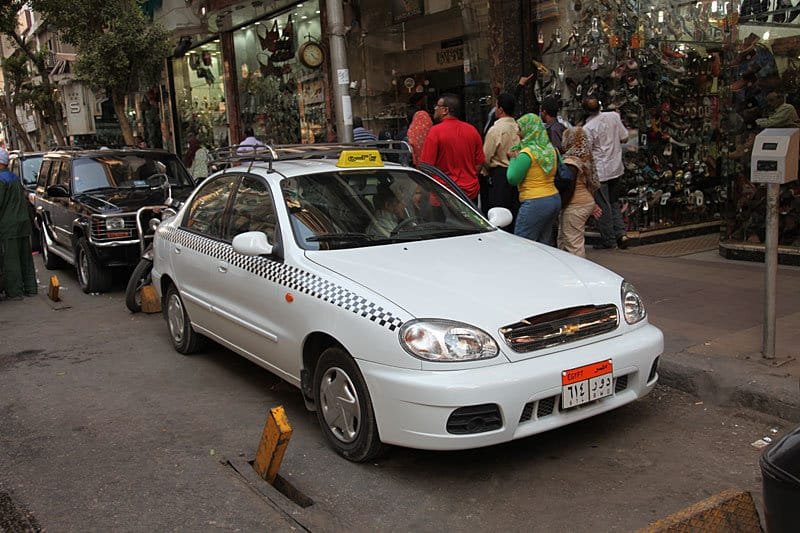
1. Taxis: Quick, Convenient, but Need Caution
Taxis are widely available across Egyptian cities and are one of the easiest and most direct ways to get around. Whether you're in Cairo, Alexandria, or Luxor, taxis are common. However, it's important to note that many taxis in Egypt are not metered, which means you'll need to agree on a fare before you set off. In Cairo, ride-hailing services like Uber and Bolt provide a more reliable and fixed pricing system, helping you avoid the hassle of negotiating fares. For short trips around the city, taxis are an efficient choice. However, if you’re planning to go on a longer journey, it’s better to confirm the fare or use a ride-hailing app to ensure transparency.
Tips:
- Always confirm the price before starting the journey if you’re taking a non-metered taxi.
- Ride-hailing services like Uber, Bolt, and Careem offer easier and safer options.
- Be prepared for potential traffic congestion, especially during rush hours in Cairo.
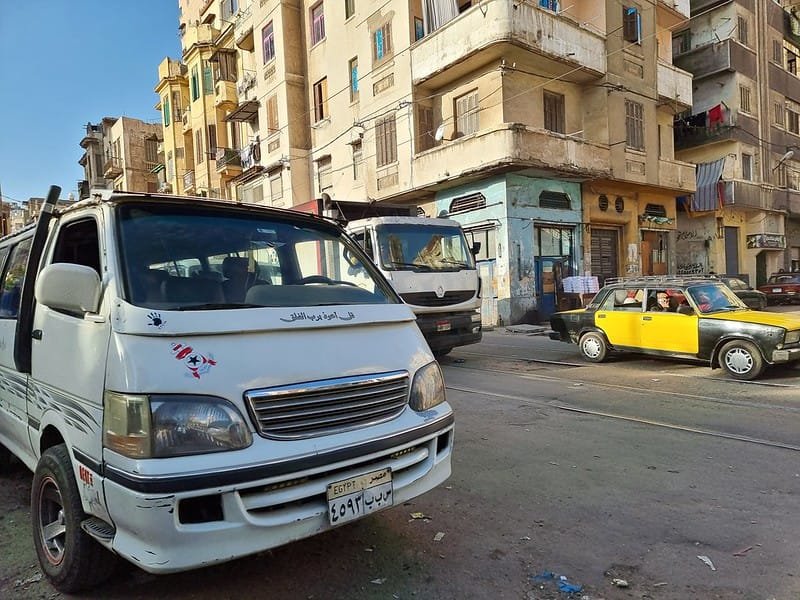
2. Public Transportation: Affordable but Can Be Overwhelming
Egypt’s public transport system is an affordable option for those traveling on a budget, but it can be overwhelming for tourists, especially in busy cities. Cairo’s Metro is a popular choice, providing a fast and efficient way to get across the city, connecting major areas and landmarks. With three lines and frequent trains, the Metro is one of the quickest ways to navigate Cairo, especially during peak traffic hours. Buses and microbuses are also widely available, though they may not be the most comfortable options for tourists, as they tend to be overcrowded and a bit chaotic. While buses are affordable, their schedules can be unreliable, and routes can be difficult to understand for non-locals.
Tips:
- The Cairo Metro is the best option for navigating the city, offering low fares and convenience.
- Avoid the microbuses unless you are familiar with the routes, as they can be confusing.
- In busy cities like Cairo, try to avoid public transport during rush hours (morning and evening).
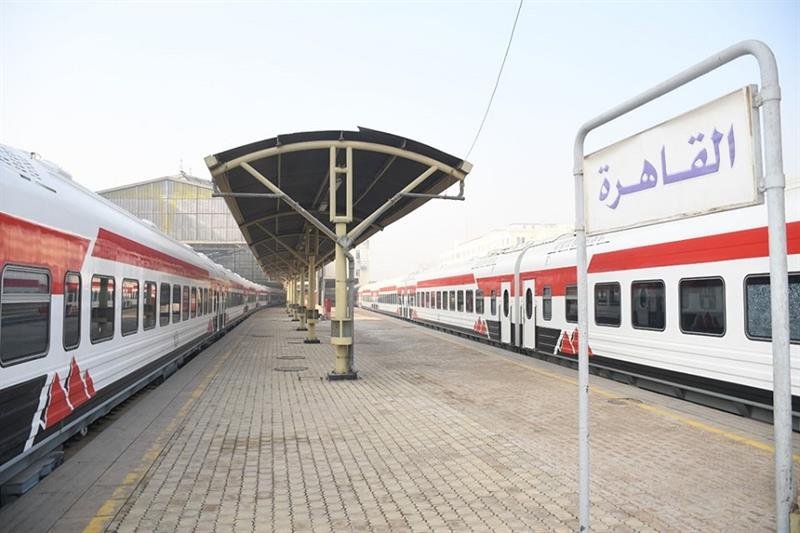
3. Trains: A Scenic Way to Travel Between Cities
For those wishing to travel between cities, Egypt’s train system provides a more relaxed and scenic alternative to buses and taxis. The Egyptian National Railways operates regular trains between major cities such as Cairo, Alexandria, Luxor, and Aswan. Trains are an affordable way to travel long distances, and passengers can choose between different classes, including first-class, second-class, and sleeper trains for overnight journeys. For example, the overnight sleeper trains from Cairo to Luxor or Aswan are a popular choice for travelers, as they provide comfortable cabins and meals, allowing you to travel while resting. Despite its affordability, the Egyptian train system can experience delays, so it's best to allow extra time for your journey.
Tips:
- Book tickets in advance for long-distance or sleeper trains to ensure availability.
- Opt for first-class or sleeper cabins for the most comfortable travel experience.
- Train schedules may vary, so always double-check departure times.

4. Ferries: Explore the Nile in Style
One of the most unique ways to travel around Egypt is by ferry, especially along the majestic Nile River. Traveling by ferry allows you to see the country from a completely different perspective, as the Nile has been the lifeblood of Egypt for thousands of years. Ferries operate between major cities like Cairo, Luxor, and Aswan, and are a scenic way to travel while soaking in the beautiful views of the river and surrounding landscapes. If you're in Luxor or Aswan, it's common to hire a private boat or take a Nile cruise, offering a luxurious way to explore ancient temples, tombs, and other historical sites. A Nile cruise also provides a relaxing way to see the monuments while enjoying food, music, and entertainment.
Tips:
- A Nile cruise is a great option for tourists who want a luxury experience and a glimpse of Egypt’s ancient history.
- Consider booking a private boat for a more customized and intimate experience.
- For shorter distances, ferries between cities or across the river are affordable and enjoyable.
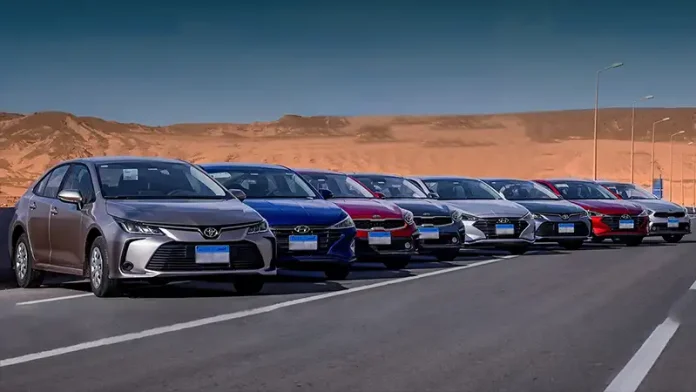
5. Car Rentals: Flexibility and Freedom
Renting a car offers the ultimate flexibility when exploring Egypt, especially if you plan to visit areas beyond major cities. It gives you the freedom to go off the beaten path and visit smaller towns and archaeological sites that are not easily accessible by public transportation. However, driving in Egypt can be a challenge, especially for those unfamiliar with the chaotic traffic conditions. Roads in rural areas may also be poorly maintained. While it is possible to rent a car in Egypt, many tourists prefer to hire a local driver who knows the ins and outs of Egypt’s road systems and traffic regulations. This option not only reduces the stress of driving but also gives you the opportunity to focus on sightseeing and enjoy the journey.
Tips:
- Renting a car is a good option if you plan to explore rural areas or need flexibility.
- Be aware of traffic patterns, especially in Cairo, where driving can be hectic.
- If you’re not confident driving in Egypt, it’s recommended to hire a local driver
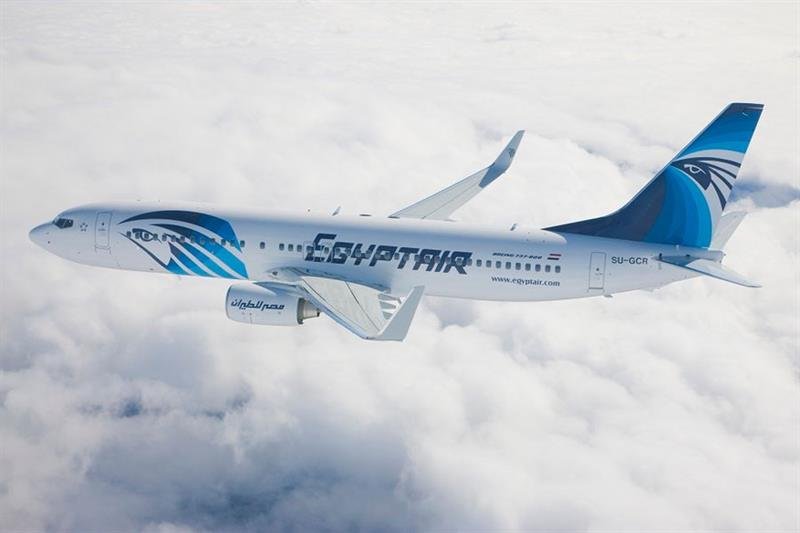
6. Domestic Flights: Quick Travel Across Egypt
For travelers who are short on time or need to cover long distances, domestic flights offer a fast and efficient way to travel between Egypt’s key cities. EgyptAir operates a comprehensive network of flights between Cairo, Alexandria, Luxor, Aswan, and other tourist destinations. Flights are reasonably priced and save considerable travel time compared to trains or buses, making them ideal for those with tight itineraries. Domestic flights are especially useful for visitors who wish to maximize their time exploring Egypt’s historical sites, such as the Valley of the Kings in Luxor or the temples of Abu Simbel in Aswan.
Tips:
- Book your flights early to secure the best fares.
- Domestic flights are ideal for covering long distances quickly and efficiently.
- Check luggage policies, as they may vary by airline.
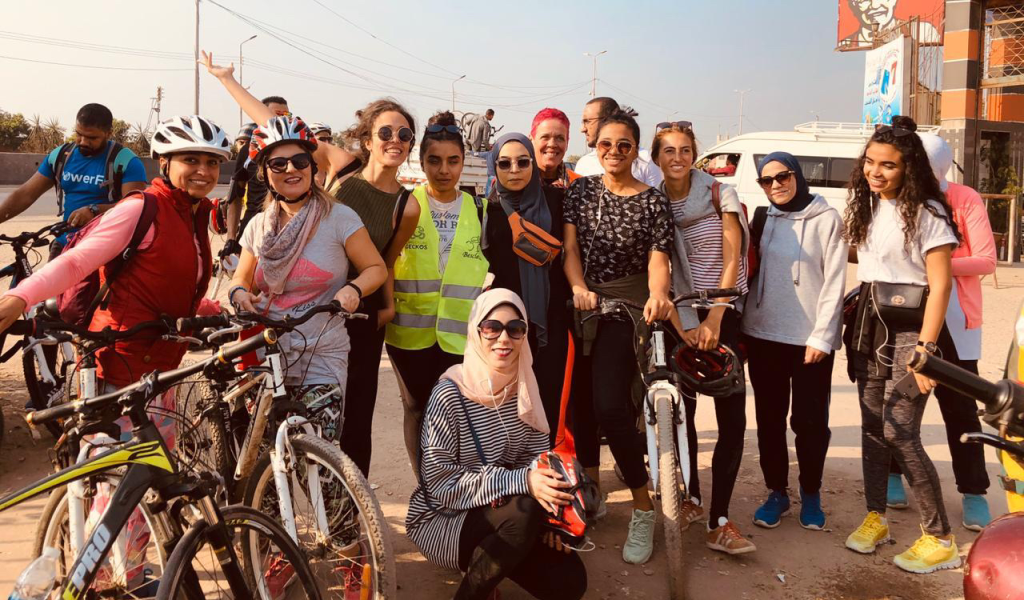
7. Cycling and Walking: Immerse Yourself in Local Life
For those looking to immerse themselves in local culture, cycling or walking is a great way to get around smaller cities like Luxor, Aswan, and Alexandria. These destinations are more relaxed and pedestrian-friendly, with many key attractions within walking or cycling distance. Renting a bicycle is an affordable way to explore the city at your own pace while enjoying the sights and sounds of everyday Egyptian life. Walking tours are also popular in cities like Cairo and Alexandria, especially around historical landmarks like the Egyptian Museum, Citadel, or Alexandria’s Corniche. Exploring on foot lets you take in the details of your surroundings and engage with locals in a more intimate way.
Walk or Cycle in Smaller Towns – In smaller Egyptian towns, walking or cycling lets you move at a slower pace, giving you a deeper connection with the local culture, people, and surroundings. It’s a great way to discover hidden gems off the beaten path.
Stay Hydrated – Egypt’s heat can be overwhelming, especially during the summer months. Always carry a water bottle with you to stay hydrated while exploring outdoor sites, markets, or long walks. Dehydration can happen quickly in the heat, so it’s important to drink water regularly.
Wear Comfortable Shoes – The streets and historical sites in Egypt can be uneven or rugged, so comfortable shoes are essential for a comfortable and safe experience. Opt for sturdy sneakers or sandals with good support, especially if you’re visiting ancient ruins or bustling local areas.
Be Cautious of Traffic – Egyptian cities, particularly Cairo, can have chaotic traffic with cars, buses, and even motorcycles weaving in and out of lanes. Always be cautious when crossing streets—wait for traffic to stop or use pedestrian crossings when possible.
Use Sun Protection – The sun in Egypt can be intense, so make sure to apply sunscreen regularly, especially if you plan to walk or cycle for extended periods. A wide-brimmed hat and sunglasses will protect your eyes and skin, helping prevent sunburns and heat-related issues.
Take Rest Breaks – The heat and intense sun can quickly wear you down, so make sure to take regular breaks. Look for shaded spots, local cafés, or scenic spots to relax and cool off. This will help you recharge and keep your energy up for the rest of your journey.
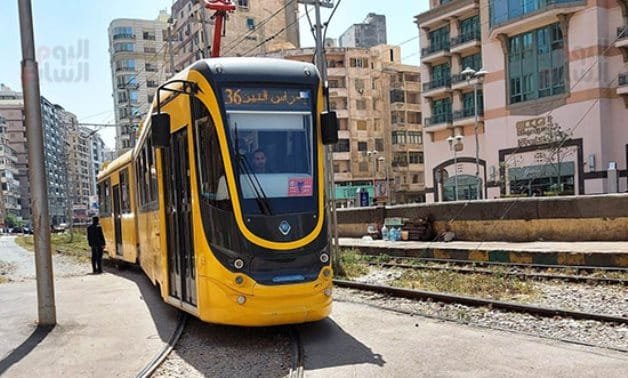
8. Tram in Alexandria
The tram in Alexandria is one of the oldest and most unique forms of public transport in Egypt. It's a nostalgic way to travel through the city and offers a scenic route along the Mediterranean coastline. Although the tram system isn't as modern as the Metro in Cairo, it provides an authentic local experience. It’s especially ideal for those looking to explore Alexandria at a slower pace and enjoy the city’s coastal views.
Tips for Using the Tram in Alexandria:
Affordable and Local: The tram is one of the cheapest ways to get around Alexandria, and it’s popular with locals. It’s an excellent choice for budget travelers who want to experience the city like a local without spending much on transportation.
Route and Stops: The tram runs along several key areas in Alexandria, including the Corniche, which offers beautiful views of the Mediterranean Sea. You can use the tram to visit popular spots like the Bibliotheca Alexandrina, Qaitbay Citadel, and the Montaza Palace. Be sure to check the route and stops before boarding to ensure it takes you where you need to go.
Expect Crowds: While the tram can be an enjoyable ride, it can get crowded, particularly during peak hours. It’s best to travel early in the morning or later in the evening to avoid the rush.
Tram Tickets: Tickets are inexpensive, and you can pay directly when you board. However, there are no ticket vending machines at most tram stations, so be prepared to pay in cash when you enter.
Look Out for Delays: The tram system in Alexandria may not be as punctual as other forms of transportation, so plan accordingly if you’re on a tight schedule. The trams may occasionally be delayed or subject to maintenance.
Open-Air Cars: Some of the trams in Alexandria are open-air, giving you a wonderful opportunity to enjoy the breeze and view of the city while you ride. These are especially popular during cooler months.
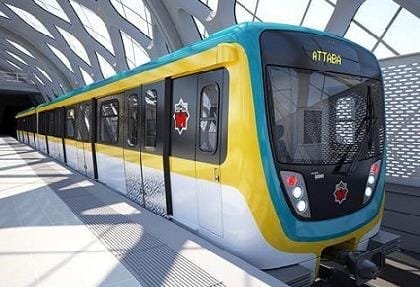
9. Cairo Metro: Fast and Affordable Urban Travel
The Cairo Metro is a convenient and affordable way to get around the busy streets of Cairo. With three main lines, it connects key areas of the city, including downtown Cairo, Giza, and the districts of Helwan and Maadi. The Metro is an excellent option for avoiding the often-congested traffic in Cairo. It's also a great way to explore the city's most popular attractions, like Tahrir Square, the Egyptian Museum, and the Pyramids of Giza (via a short transfer from the Metro).
Tips for Using the Cairo Metro:
Affordable Travel: The Metro offers low-cost tickets, which makes it a great option for budget-conscious travelers. You can buy a single journey ticket, a multi-ride card, or even a day pass, depending on how long you plan to stay in Cairo.
Avoid Rush Hour: The Metro can get very crowded, especially during peak hours (8 AM to 9 AM and 5 PM to 7 PM). If you prefer a more comfortable ride, try to plan your trips outside of these busy times.
Keep Your Belongings Safe: While the Metro is generally safe, it can get crowded, which may attract pickpockets. Always keep your belongings close to you and be cautious of your surroundings.
Clear Signage: The Cairo Metro is well-marked with signs in both Arabic and English, making it relatively easy for non-Arabic speakers to navigate. Maps are available at stations, and the trains have announcements in English to help you stay on track.
Women-Only Cars: For added comfort, especially during crowded times, the Cairo Metro offers women-only carriages. These are located at the front of each train and provide a more comfortable and secure environment for female travelers.
Air-Conditioning: While some trains are equipped with air-conditioning, not all are. It’s a good idea to check which trains are air-conditioned, especially in the heat of the summer months, for a more comfortable ride.

10 . Tuk-Tuks in Egypt
Tuk-tuks are a popular form of local transportation in many Egyptian cities, particularly in smaller towns and rural areas. These three-wheeled vehicles are inexpensive and can easily navigate through narrow streets, making them an ideal choice for short trips or reaching places that larger vehicles can't access
Tips for Using Tuk-Tuks:
- Negotiate the Fare: It’s important to agree on the price before starting your ride. Tuk-tuk drivers often don’t use meters, so bargaining is common.
- Safety: While tuk-tuks are fun and convenient, they may not always be the safest form of transport, especially in busy areas. Always be cautious and ensure you’re wearing a seatbelt if available.
- Short Distances: Tuk-tuks are best used for short trips within a neighborhood or area, such as going to a local market or a nearby tourist site.
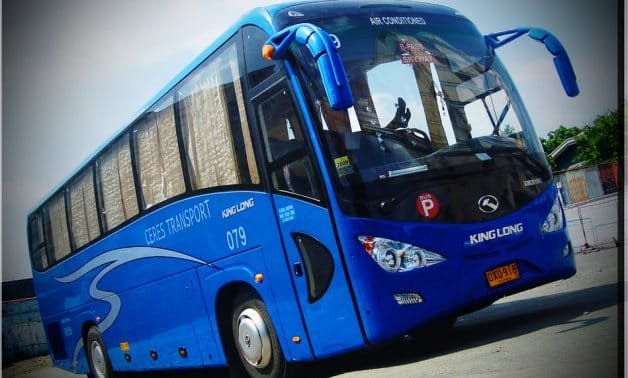
11 . Bus Companies in Egypt
Public buses are another cost-effective way to get around Egypt. In addition to local city buses, there are also intercity bus companies that connect major cities, like Cairo, Alexandria, Luxor, and Aswan.
Types of Buses in Egypt:
Public Buses: These buses operate within cities like Cairo and Alexandria, providing an affordable way to travel. They can be crowded and may not have the most modern amenities, but they are very economical.
Intercity Buses: For longer distances, several private bus companies offer services between cities. These buses are generally more comfortable, with air conditioning and reclining seats. Some popular bus companies for intercity travel include:
- Go Bus: One of the most reliable and comfortable bus services in Egypt, offering routes between major cities like Cairo, Alexandria, and Sharm El Sheikh.
- SuperJet: Another well-known intercity bus company that provides service between cities like Cairo, Alexandria, Luxor, and Hurghada.
- West and Delta: These buses serve routes to various destinations across Egypt, offering a mix of comfort and budget options.
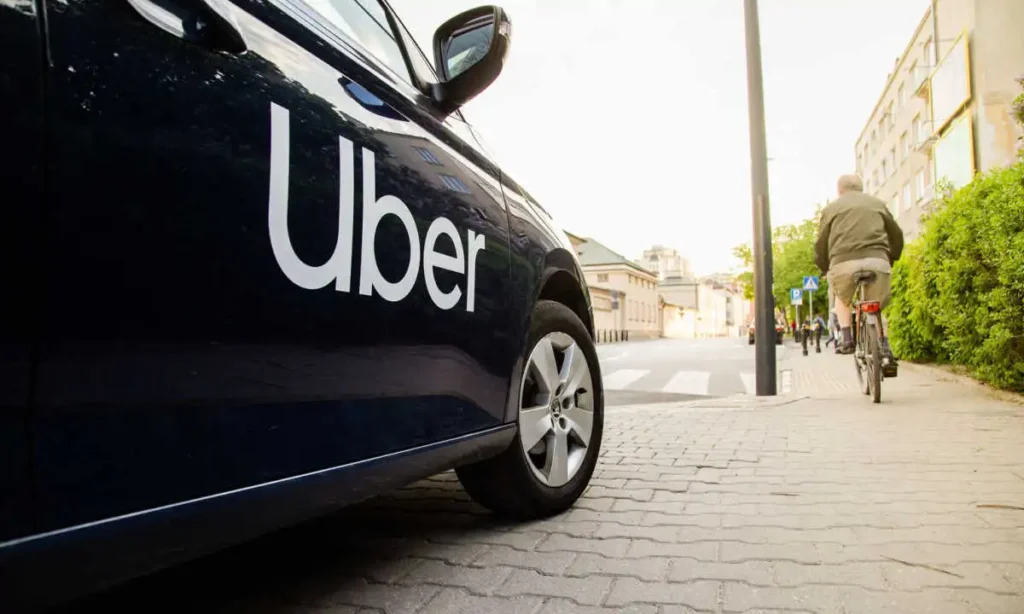
12 . Uber in Egypt
Uber is widely available in Egypt, especially in larger cities like Cairo and Alexandria. The app allows you to request a ride with ease, track your driver, and pay securely through the app. It’s known for providing a safer and more reliable alternative to regular taxis.
Tips for Using Uber in Egypt:
- Download the App: You can use the Uber app to book a ride easily. It’s available in English and Arabic, making it accessible for both locals and tourists.
- Know the Fares: Uber provides an upfront fare estimate before you confirm your ride, which is one of the reasons many travelers prefer it. While it’s more expensive than traditional taxis, it’s still affordable and more predictable.
- Avoid Taxi Confusion: Using Uber avoids the common confusion with regular taxis regarding fares, as Uber rides are charged by distance and time.
- Payment Options: You can pay through the app using your credit or debit card, which eliminates the need to handle cash.


